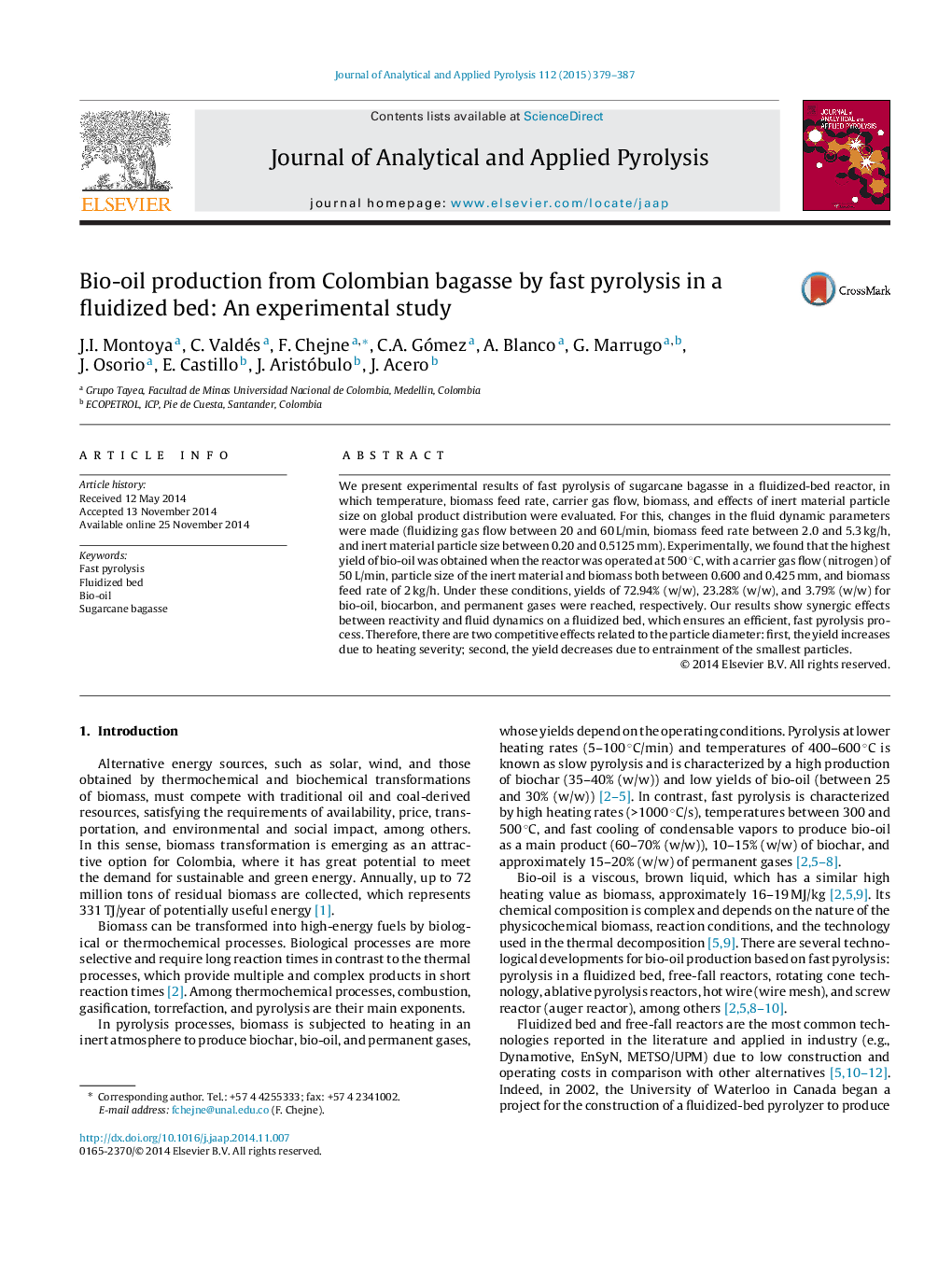| Article ID | Journal | Published Year | Pages | File Type |
|---|---|---|---|---|
| 1197256 | Journal of Analytical and Applied Pyrolysis | 2015 | 9 Pages |
•Colombian sugarcane bagasse was pyrolyzed on a bench-scale, fluidized-bed reactor.•Change: feed rate, carrier gas flow, temperature, biomass, and silica particle size.•Compositions of permanent gas were shown for each parameter.•Bio-oil yield comparison by pyrolysis of three different types of biomasses.•Synergic effects were shown between reactivity and fluid dynamics in a fluidized bed.
We present experimental results of fast pyrolysis of sugarcane bagasse in a fluidized-bed reactor, in which temperature, biomass feed rate, carrier gas flow, biomass, and effects of inert material particle size on global product distribution were evaluated. For this, changes in the fluid dynamic parameters were made (fluidizing gas flow between 20 and 60 L/min, biomass feed rate between 2.0 and 5.3 kg/h, and inert material particle size between 0.20 and 0.5125 mm). Experimentally, we found that the highest yield of bio-oil was obtained when the reactor was operated at 500 °C, with a carrier gas flow (nitrogen) of 50 L/min, particle size of the inert material and biomass both between 0.600 and 0.425 mm, and biomass feed rate of 2 kg/h. Under these conditions, yields of 72.94% (w/w), 23.28% (w/w), and 3.79% (w/w) for bio-oil, biocarbon, and permanent gases were reached, respectively. Our results show synergic effects between reactivity and fluid dynamics on a fluidized bed, which ensures an efficient, fast pyrolysis process. Therefore, there are two competitive effects related to the particle diameter: first, the yield increases due to heating severity; second, the yield decreases due to entrainment of the smallest particles.
